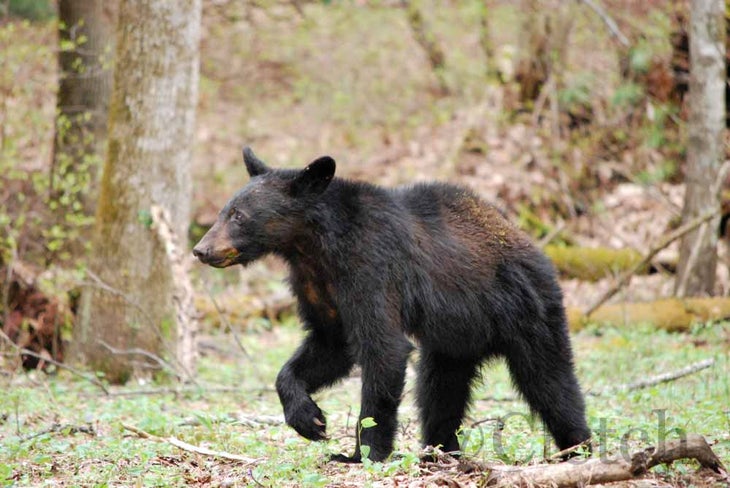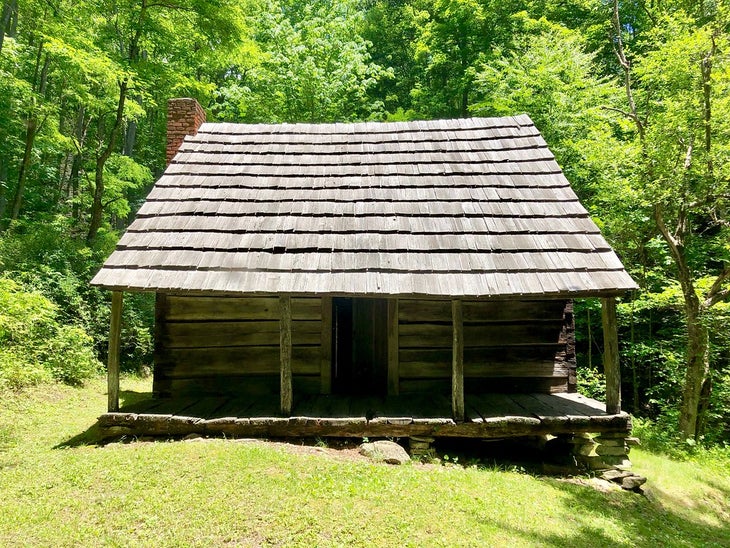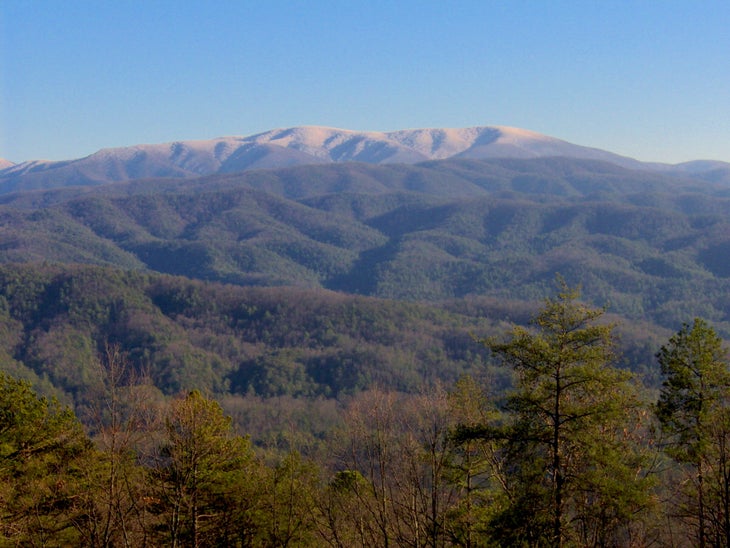Heading out the door? Read this article on the new Outside+ app available now on iOS devices for members! Download the app.
Bearpacker is Backpacker’s annual celebration of bear safety, science, and stories.
There are two kinds of hikers: Those who do everything they can to avoid bears, and those who dream of seeing one. If you’re one of the latter, Great Smoky Mountains is the place. About 1,500 black bears call the park home, for an average of two bears per square mile. With numbers like that your odds of seeing a bear are pretty good, but picking the right spot can stack the deck. Food sources like berries and wild apples, access to water, and good denning sites all increase the chances of spotting one of the Smokies bruins on your hike. These three trails are a good place to start.

Rich Mountain Loop
Cades Cove is one of the best places for bear-spotting in the park, but most visitors only see it from the road, slogging through slow-moving lines of cars full of tourists. Skip the traffic jam and head into where the bears really live on the 8.5-mile Rich Mountain Loop. Head left at the junction with Crooked Arm Ridge trail at mile .5, keeping an eye out for mountain laurel blooming among the hardwoods. Meadows interspersed through the forest bloom with azalea, ragwort, and butterfly weed, as well as offering a better range of vision for catching a glimpse of an elusive black bear. At mile 3.4, turn right on the Indian Grave Gap trail before starting downhill. At mile 5.9, turn right on the Crooked Arm Ridge trail to head back to the parking lot.
More Bearpacker: In the Woods of Oklahoma, Researchers Are Helping to Rebuild a Bear Population

Little Cataloochee Trail
Wild apples dot the fields of this historic town and the surrounding woods, providing a valuable food source for several different wildlife species, including bears. The trail bobs up and down past a few streams before reaching Hannah Cabin, built in 1864, at mile 1.2. The Little Cataloochee Baptist Church, 2 miles in, offers good views of the surrounding fields (now being reclaimed by the forest) and works well as a turnaround point.

Gregory Bald
It’s hard to say who’s more excited about the blueberries crowding this peak every August, the hikers or the bears. The park’s omnivorous black bears eat about 85% fruits and nuts, with meat providing the remaining 15%, which makes berry patches an extremely important resource as they prepare for hibernation. Start from the Gregory Ridge Trailhead, passing backcountry site 12 at mile 2 (make a reservation to extend your trip from a day to a weekend). Past the campsite the trail starts climbing, gaining 2,000 feet in only 3 miles. The top of the bald itself is a grassy meadow stretching over 10 acres; in early summer it fills with a riot of Azalea blooms.
Bear Basics
Early morning and late evening are the times when bears are most active, and consequently the best times to spot them. When the weather turns cold, they vanish from the woods, heading into their dens for a winter of hibernation. The black bears of Great Smoky Mountains are unusual in their den choices–they often den several feet off the ground in standing hollow trees. It is illegal to get closer than 50 yards to any bear in the national park. Take care of your own safety: Consider carrying bear spray, make noise when passing around blind corners or through thick brush, and observe from a distance.
